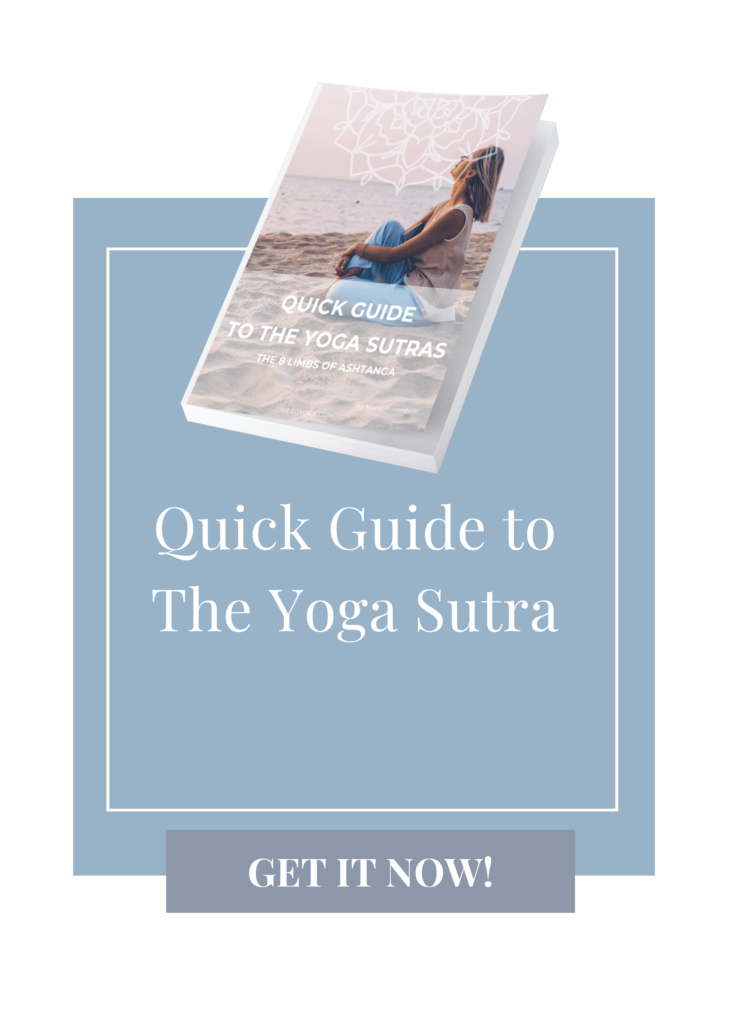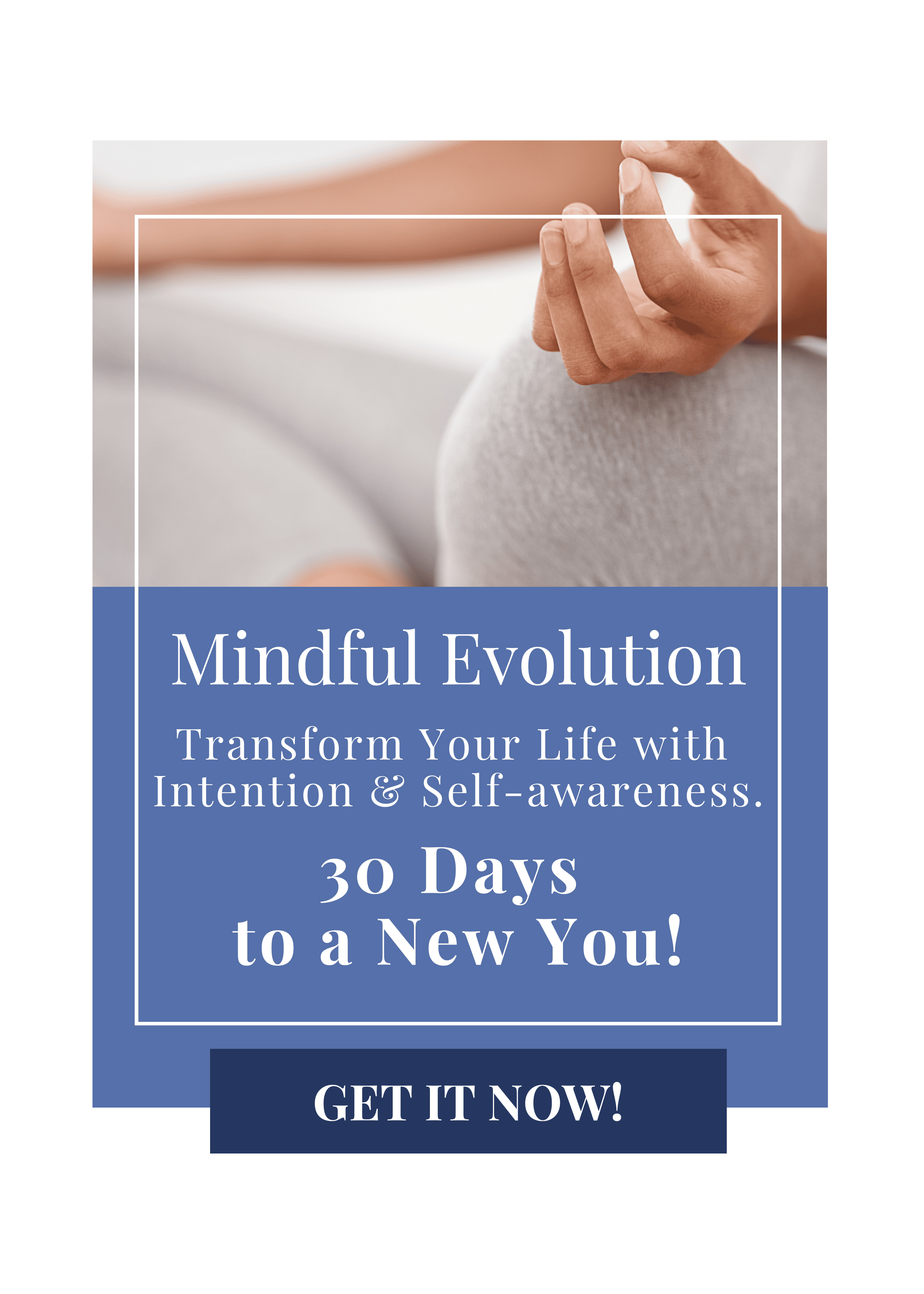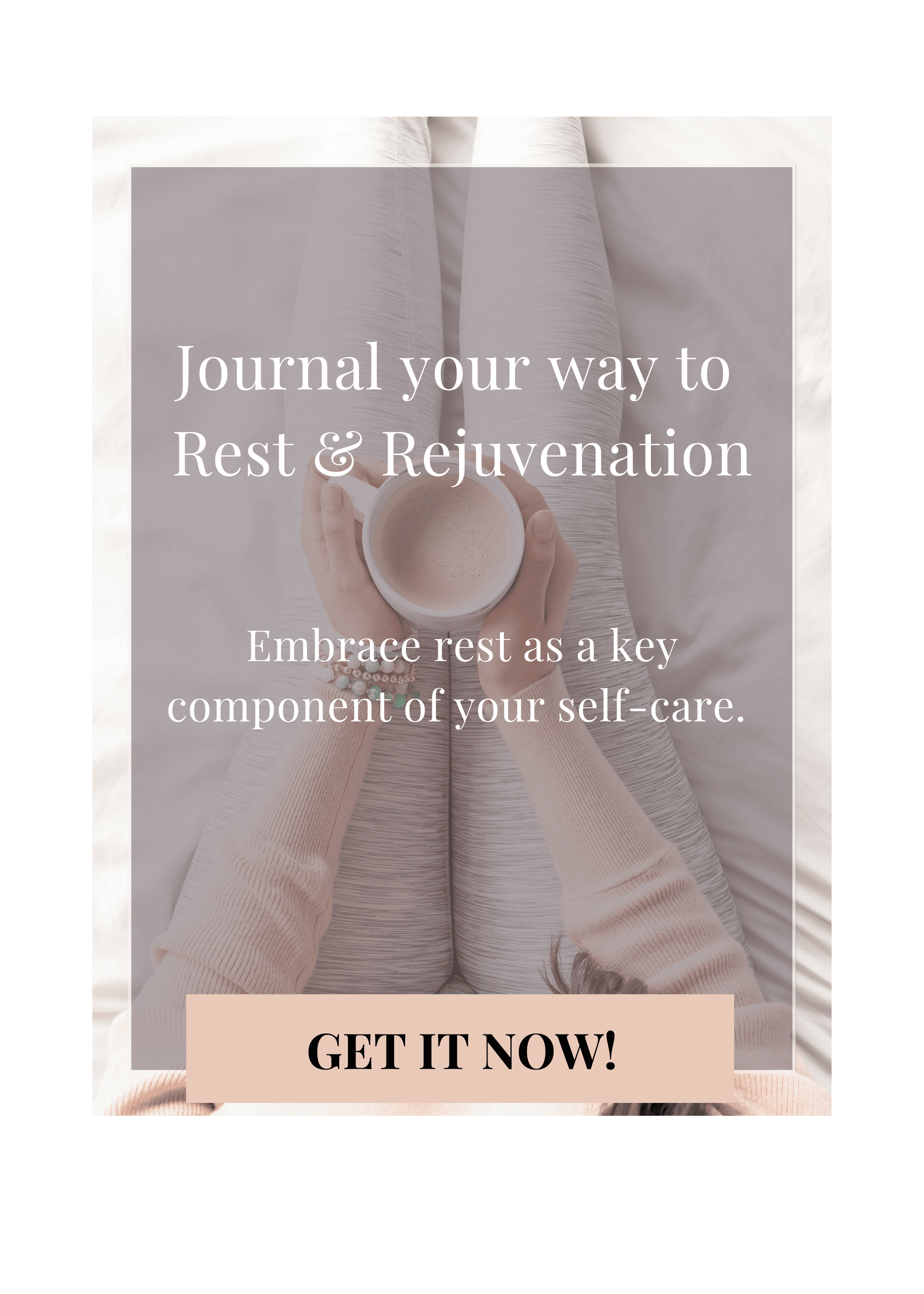This article includes a short introduction to the principles of Dhyana + journal prompts + practical and easy ways to incorporate the concept into your life.
NOTE If you just landed on this article please read the first article in this series first:
“What can an ancient text called the Yoga Sutra do for you?”
DHYANA – Meditation.
(Yoga Sutra III.2)
Dhyana is the seventh limb of the yoga Sutra. The word Dhyana comes from the Sanskrit word dhyai, which means “to think about.”
Dhyana involves focused concentration and meditation on an object to get to know the truth about it. This deeper concentration of the mind is a part of deepening your self-knowledge so that you can separate illusion from reality, and ultimately, reach the ultimate goal of yoga: Samadhi (bliss, or union with the source).
Dhyana generally means meditation. What separates Dharana from Dhyana is the ability to emerge yourself in the meditation or object of meditation. This is a step up from simply being able to hold a steady focus and attention.
Here you no longer perceive things as separate but as connected. You’ll develop the ability to release any limitations and be able to find yourself in an uninterrupted flow of focused attention.
This deeper meditation first becomes possible when you have integrated the first 6 limbs of the Sutra. Then you can maintain your focus and be 100 percent present in the now.
This can all sound very fancy and a bit out there. But even though you might “just” practice yoga to feel good, and achieve greater self-knowledge, integrating the limbs into your practice one by one will eventually lead you to this place.
As you continue to find moments of peace and quiet and experience little glimmers of bliss, you can rest assured that yoga will provide exactly what you need right now, and what is relevant for you to work on today. It’s all part of the plan to move you forward towards the last limbs of the Yoga Sutra.
According to the Yoga Sutra, the deeper purpose of meditation is to interrupt the constant fluctuation of the mind and stop the constant mental activity going on inside you. Your body and mind are constantly processing sensory input, memory, imagination, and reality, trying to process and make sense of it all. Out of all of these, memory is the most difficult to get a handle on as it constantly provides you with echoes of the past along with an endless stream of thoughts and feelings associated with it.
Master Dhyana and you’ll be able to master your mind.

How to practice Dhyana.
The practice of yoga and any kind of physical exercise.
- Begin your yoga practice by setting a clear intention to remain present and fully immersed in each pose.
- Before your training, spend a few minutes in meditation to center yourself.
- Focus deeply on your breath during your practice.
- If you practice Vinyasa or any flow-style yoga, synchronize each movement with your breath and move with full awareness of each transition.
- In more static poses, concentrate on the sensations within your body.
- End your yoga practice with a silent Savasana pose, allowing yourself to absorb the benefits of your practice.
- Bring your full attention to the movements of your body.
- If possible, try to train outdoors and use the natural surroundings to deepen your meditative state.
- After completing your training, take a few moments to reflect on what you experienced.
Applying the principles of Dhyana to your life.
- Dedicate a specific time each day for meditation, starting with just a few minutes and gradually increasing the duration.
- Integrate mindfulness into everyday activities such as eating, walking, or even during tasks like washing the dishes. Practice mindful breathing throughout the day.
- Designate a quiet and comfortable space in your home for meditation and reflection.
- Practice Dhyana by listening to others without judgment.
- Set aside times when you deliberately disconnect from electronic devices and social media.
- Integrate Dhyana into your yoga practice by maintaining a meditative focus during your practice.
- Use guided meditations as tools to help you practice Dhyana.
- Reflect on your meditation experiences and insights through journaling.
- Dedicate some time to reading up on meditation and spirituality.

Important self-investigation.
Like the other limbs of the Yoga Sutra, meditation is a process that takes discipline and a lot of practice to master. Think of it a bit like having to train a puppy that would much rather run around than sit still. You will have to train your brain to let go and come back to you whenever you ask it to and to be still, even if it’s just for a few seconds at a time, to begin with. Like working with a puppy, this takes training and patience!
In Dhyana meditation, you (like with Dharana meditation) let the mind focus on a particular object. But here you take it one step further and try to let go of any preconceived ideas and notices of it, allowing yourself to see it for the first time and become fully absorbed in the experience of it.
You can choose any object that feels relevant to you right now. It can be an internal sensation, a physical body part, your breath, an external object, or a concept like gratitude.
Starting out, the focus is simply to find a way to meditate, to create a solid foundation. This foundation you build by having gone through the previous limbs. When you start, it would be ideal if you have just practiced yoga before your meditation, so that your body feels comfortable and ready to be completely still for a while.
Find yourself a comfortable seated position, but don’t spend too much time creating a perfect meditation posture, by now you should slip into your meditation on automation. The most important factor is that it is a position that you can stay in for a while. Make sure you are relaxed, and calm and can sit without interruptions.
If it feels a bit difficult to begin with, you can start with just 5 to 10 minutes at a time, and then slowly build on it as you get better at letting go and surrendering to the experience.
A regular Dhyana meditation practice has benefits for the mind, body, and spirit. It releases stress from the body and calms your mind. You will feel more at peace as you experience the interconnectedness of all things and recognize the unity of your mind, body, and breath, and your connection to everybody and everything.
You might also like “Five amazing books on yoga“
Contemplation and Journal prompts on the principles of Dhyana.
- How would you describe a shift in consciousness during meditation to someone who has never meditated? How does it feel?
- What changes in your daily life have you observed since starting to meditate?
- How has increased mindfulness affected your interactions, decisions, and overall mood?
- What challenges are you currently facing in achieving or maintaining a state of Dhyana? How can you overcome them?
- How does your physical state impact your ability to enter Dhyana? What adjustments can you make to support a deeper meditative experience?
- How do you carry the concept of Dhyana into your daily activities?
- How does the practice of Dhyana meditation affect your emotional state both during and after meditation?
- Have you noticed any changes since starting to meditate regularly in your mood and emotions? What has happened?
- What distractions will most often pull you out of meditation? How can you mitigate this?
- Which meditation technique works best for you? Why do you think this is?
- How has meditating contributed to your personal growth? Consider aspects such as self-awareness, patience, compassion, and resilience.
Ready to take the final step – Samadhi!






